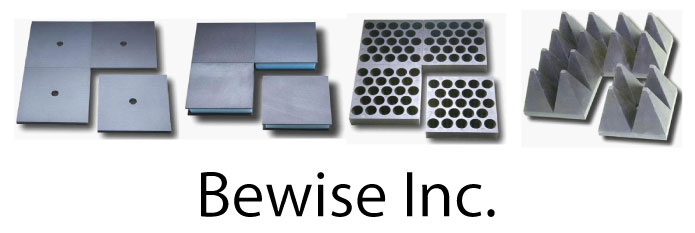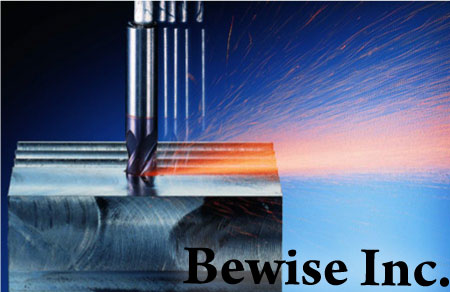
|
合金 牌號 |
ISO國際標準 | 密度g/cm2 | 抗彎強度不低於N/cm2 |
硬度不低於 HRA |
加工條件及用途 |
| YG3X | K01 | 14.6-15.2 | 1320 | 92 | 適於鑄鐵、有色金屬及合金淬火鋼合金鋼小切削斷面高速精加工。 |
| YG6A | K05 | 14.6-15.0 | 1370 | 91.5 | 適於硬鑄鐵,有色金屬及其合金的半精加工,亦適於高錳鋼、淬火鋼、合金鋼的半精加工及精加工。 |
| YG6X | K10 | 14.6-15.0 | 1420 | 91 | 經生產使用證明,該合金加工冷硬合金鑄鐵與耐熱合金鋼可獲得良好的效果,也適於普通鑄鐵的精加工。 |
| YK15 |
K15 K20 |
14.2-14.6 | 2100 | 91 | 適於加工整體合金鑽、銑、鉸等刀具。具有較高的耐磨性及韌性。 |
| YG6 | K20 | 14.5-14.9 | 1380 | 89 | 適於用鑄鐵、有色金屬及合金非金屬材料中等切削速度下半精加工。 |
| YG6X-1 | K20 | 14.6-15.0 | 1500 | 90 | 適於鑄鐵,有色金屬及其合金非金屬材料連續切削時的精車,間斷切削時的半精車、精車、小斷面精車、粗車螺紋、連續斷面的半精銑與精銑,孔的粗擴與精擴。 |
| YG8N | K30 | 14.5-14.8 | 2000 | 90 | 適於鑄鐵、白口鑄鐵、球墨鑄鐵以及鉻、鎳不銹鋼等合金材料的高速切削。 |
| YG8 | K30 | 14.5-14.9 | 1600 | 89.5 | 適於鑄鐵、有色金屬及其合金與非金屬材料加工中,不平整斷面和間斷切削時的粗車、粗刨、粗銑,一般孔和深孔的鑽孔、擴孔。 |
| YG10X | K35 | 14.3-14.7 | 2200 | 89.5 | 適於製造細徑微鑽、立銑刀、旋轉銼刀等。 |
| YS2T | K30 | 14.4-14.6 | 2200 | 91.5 | 屬超細顆粒合金,適於低速粗車,銑削耐熱合金及鈦合金,作切斷刀及絲錐、鋸片銑刀尤佳。 |
| YL10.1 | K15-K25 | 14.9 | 1900 | 91.5 | 具有較好的耐磨性和抗彎強度,主要用為生產擠壓棒材,適合做一般鑽頭、刀具等耐磨件。 |
| YL10.2 | K25-K35 | 14.5 | 2200 | 91.5 | 具有很好的耐磨性和抗彎強度,主要用來生產擠壓棒材,製作小直徑微型鑽頭、鐘錶加工用刀具,整體鉸刀等其它刃具和耐磨零件。 |
| YG15 | 13.9-14.2 | 2100 | 87 | 適於高壓縮率下鋼棒和鋼管拉伸,在較大應力下工作的頂鍛、穿孔及衝壓工具。 | |
| YG20 | 13.4-13.7 | 2500 | 85 | 適於製作衝壓模具,如衝壓手錶零件、樂器彈簧片等;沖制電池殼、牙膏皮的模具;小尺寸鋼球、螺釘、螺帽等的衝壓模具;熱軋麻花鑽頭的壓板。 | |
| YG20C | 13.4-13.7 | 2200 | 82 | 適於製作標準件、軸承、工具等行業用的冷鐓、冷沖、冷壓模具;彈頭對彈殼的衝壓模具。 | |
| YT15 | P10 | 11.0-11.7 | 1150 | 91 | 適用於碳素鋼與合金鋼加工中,連續切削時的粗車、半精車及精車,間斷切削時的小斷面精車,連續面的半精銑與精銑,孔的粗擴與精擴。 |
| YT14 | P20 | 11.2-12.0 | 1270 | 90.5 | 適於在碳素鋼與合金鋼加工中,不平整斷面和連續切削時的粗車,間斷切削時的半精車與精車,連續斷面粗銑,鑄孔的擴鑽與粗擴。 |
| YT5 | P30 | 12.5-13.2 | 1430 | 89.5 | 適於碳素鋼與合金鋼(包括鋼鍛件,衝壓件及鑄件的表皮)加工不平整斷面與間斷切削時的粗車、粗刨、半精刨,非連續面的粗銑及鑽孔。 |
| YS25 | P20、P40 | 12.8-13.2 | 2000 | 91 | 適應於碳素鋼、鑄鋼、高錳鋼、高強度鋼及合金鋼的粗車、銑削和刨削。 |
| YS30 |
P25 P30 |
12.45 | 1800 | 91 | 屬超細顆粒合金,適於大走刀高效率銑削各種鋼材,尤其是合金鋼的銑削。 |
| YW1 | M10 | 12.6-13.5 | 1180 | 91.5 | 適於耐熱鋼、高錳鋼、不銹鋼等難加工鋼材及普通鋼和鑄鐵的加工。 |
| YW2 | M20 | 12.4-13.5 | 1350 | 90.5 | 適於耐熱鋼、高錳鋼、不銹鋼及高級合金鋼等特殊難加工鋼材的精加工,半精加工。普通鋼材和鑄鐵的加工。 |
| YT15 | P10 | 11.0-11.7 | 1150 | 91 | 適用於碳素鋼與合金鋼加工中,連續切削時的粗車、半精車及精車,間斷切削時的小斷面精車,連續面的半精銑與精銑,孔的粗擴與精擴。 |
| YT14 | P20 | 11.2-12.0 | 1200 | 90.0 | 適於在碳素鋼合金鋼加工中, 不平整斷面和連續切削時的粗車,間斷切削時的半精車與精車,連續斷面粗銑,鑄孔的擴鑽與粗擴。 |
| YT5 | P30 | 12.5-13.2 | 1400 | 89.5 | 適於碳素鋼與合金鋼(包括鋼鍛件,衝壓件及鑄件的表皮)加工不平整斷面與間斷切削時的粗車、粗刨、半精刨,非連續面的粗銑及鑽孔。 |
| YS30 |
P25 P30 |
12.45 | 1800 | 91.0 | 屬超細顆粒合金,適於大走刀高效率銑削各種鋼材,尤其是合金鋼的銑削。 |
| YS25 | M20、M30P20、P40 | 12.8-13.2 | 2000 | 91.0 | 適應於碳素鋼、鑄鋼、高錳鋼、高強度鋼及合金鋼的粗車、銑削和刨削。 |
| YS2T |
K30 M30 |
14.4-14.6 | 2200 | 91.5 | 屬超細顆粒合金,適於低速粗車,銑削耐熱合金及鈦合金,作切斷刀及絲錐、鋸片銑刀尤佳。 |
| YW1 | M10 | 12.6-13.5 | 1200 | 91.5 | 適於耐熱、高錳鋼、不銹鋼等難加工鋼材及普通鋼材和鑄鐵的加工。 |
| YW2 | M20 | 12.4-13.5 | 1350 | 90.5 | 適於耐熱鋼、高錳鋼、不銹鋼及高級合金鋼等特殊難加工鋼材的精加工,並精加工。普通鋼材和鑄鐵的加工。 |
| YW3 |
M10 M20 |
12.7-13.3 | 1300 | 92 | 適於合金鋼、高強度鋼、低合金、超強度鋼的精加工和半精加工。亦可在衝擊力小的情況下精加工。 |
| YG6A | K10 | 14.6-15.0 | 1400 | 91.5 | 適於硬鑄鐵,有色金屬及其合金的半精加工,亦適於高錳鋼、淬火鋼、合金鋼的半精加工及精加工。 |
| YG6X | K10 | 14.6-15.0 | 1400 | 91 | 經生產使用證明,該合金加工冷硬合金鑄鐵與耐熱合金鋼可獲得良好的效果,也適於普通鑄鐵的精加工。 |
| YG6 | K20 | 14.6-15.0 | 1450 | 89.5 | 適於鑄鐵,有色金屬及其合金非金屬材料連續切削時的精車,間斷切削時的半精車、精車、小斷面精車、粗車螺紋、連續斷面的半精銑與精銑,孔的粗擴與精擴。 |
| YG8 | K30 | 14.5-14.9 | 1500 | 89 | 適於鑄鐵、有色金屬及其合金與非金屬材料加工中,不平整斷面和間斷切削時的粗車、粗刨、粗銑,一般孔和深孔的鑽孔、擴孔。 |
| YK15 |
K15 K20 |
14.2-14.6 | 2100 | 91 | 適於加工整體合金鑽、銑、鉸等刀具。具有較高的耐磨性及韌性。 |
| YG15 | 13.9-14.2 | 2100 | 87 | 適於高壓縮率下鋼棒和鋼管拉伸,在較大應力下工作的頂鍛、穿孔及衝壓工具。 | |
| YG20 | 13.4-13.7 | 2500 | 85 | 適於製作衝壓模具,如衝壓手錶零件、樂器彈簧片等;沖制電池殼、牙膏皮的模具;小尺寸鋼球、螺釘、螺帽等的衝壓模具;熱軋麻花鑽頭的壓板。 | |
| YG20C | 13.4-13.7 | 2200 | 82 | 適於製作標準件、軸承、工具等行業用的冷鐓、冷沖、冷壓模具;彈頭對彈殼的衝壓模具。 | |
| YL10.1 |
K12-K25 M10-M30 |
14.9 | 1900 | 91.5 | 具有較好的耐磨性和抗彎度,主要用為生產擠壓棒材,適合做一般鑽頭、刀具等耐磨件。 |
| YL10.2 |
K25-K35 M25-M40 |
14.5 | 2200 | 91.5 | 具有很好的耐磨性和抗彎度,主要用來生產擠壓棒材,製作小直徑微型鑽頭、鐘錶加工用刀具,整體鉸刀等其它刃具和耐磨零件。 |















